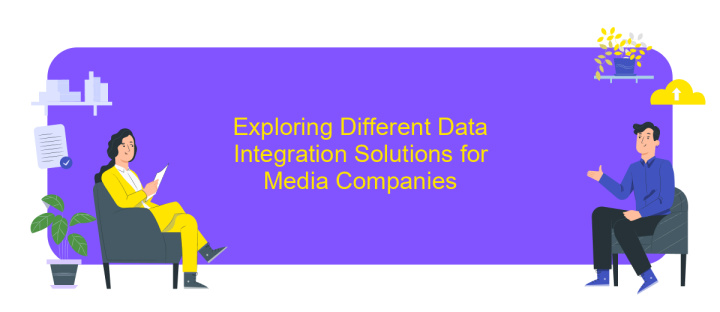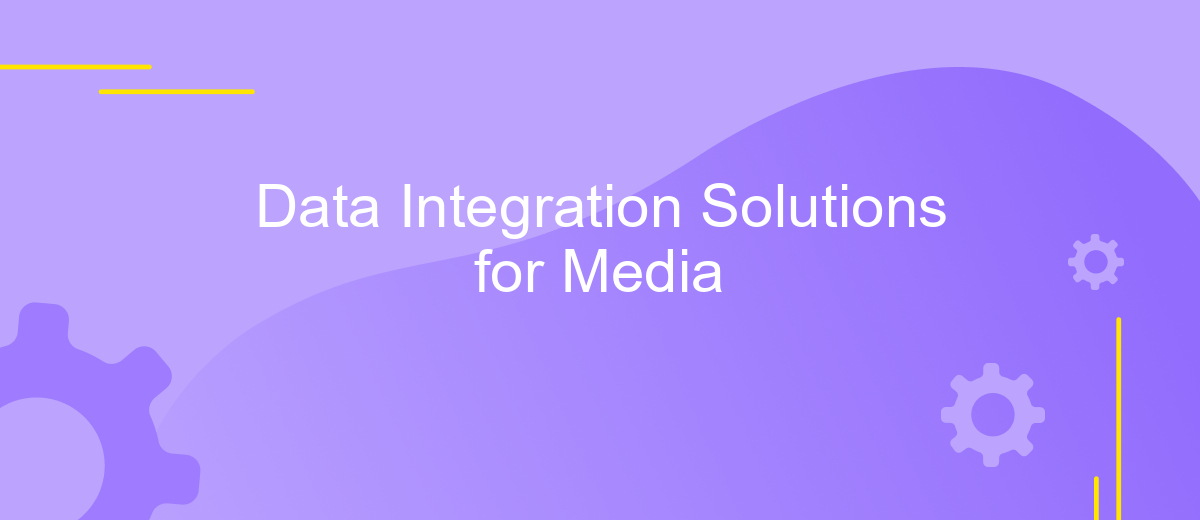Data Integration Solutions for Media
In today's fast-paced media landscape, data integration solutions have become essential for organizations striving to streamline operations and enhance decision-making. By seamlessly merging data from diverse sources, these solutions enable media companies to gain comprehensive insights, optimize content delivery, and improve audience engagement. As the industry continues to evolve, effective data integration is crucial for maintaining a competitive edge and driving innovation in media production and distribution.
Understanding the Data Integration Challenges in Media
In the rapidly evolving media landscape, data integration poses significant challenges due to the sheer variety and volume of data sources. Media companies deal with diverse types of data, including audience analytics, social media interactions, and content metadata, each originating from different platforms and formats. This diversity complicates the task of creating a unified data ecosystem, essential for informed decision-making and strategic planning.
- Heterogeneous Data Sources: Media organizations must integrate data from various sources such as websites, mobile apps, and third-party platforms, each with unique structures and protocols.
- Data Volume and Velocity: The constant influx of high-volume data streams requires robust systems capable of real-time processing and analysis.
- Data Quality and Consistency: Ensuring data accuracy and consistency across sources is critical to maintain the integrity of insights derived from integrated data.
- Privacy and Compliance: Navigating the complexities of data privacy regulations, such as GDPR, adds another layer of challenge to data integration efforts.
Addressing these challenges requires a strategic approach, leveraging advanced integration tools and technologies. Media companies must adopt scalable solutions that facilitate seamless data flow and enable real-time analytics, ensuring they can harness the full potential of their data assets to drive innovation and competitive advantage.
Key Benefits of Data Integration in the Media Industry

Data integration in the media industry offers numerous advantages, streamlining operations and enhancing content delivery. By consolidating disparate data sources, media companies can gain a comprehensive view of their audience, enabling more targeted content creation and distribution. This holistic approach not only boosts audience engagement but also optimizes advertising strategies, leading to increased revenue. Furthermore, integrated data systems facilitate real-time analytics, allowing media organizations to swiftly adapt to market trends and viewer preferences, ensuring they remain competitive in a rapidly evolving landscape.
Implementing effective data integration solutions can be challenging, but services like ApiX-Drive simplify the process. By providing seamless connectivity between various applications and platforms, ApiX-Drive enables media companies to automate workflows and reduce manual data handling. This efficiency not only saves time and resources but also minimizes the risk of errors, ensuring data accuracy and reliability. As a result, media businesses can focus on innovation and content quality, driving growth and maintaining a strong market presence.
Exploring Different Data Integration Solutions for Media Companies

Media companies today face the challenge of managing vast amounts of data from diverse sources. Effective data integration solutions are essential to streamline operations and enhance decision-making. These solutions help in consolidating data from various platforms, ensuring consistency and accessibility across the organization.
- ETL (Extract, Transform, Load) Tools: These solutions extract data from different sources, transform it into a suitable format, and load it into a data warehouse.
- API Integration: APIs enable seamless communication between different software systems, allowing for real-time data exchange and integration.
- Data Virtualization: This approach provides a unified view of data from multiple sources without requiring physical consolidation.
- Cloud-Based Integration Platforms: These platforms offer scalable solutions for integrating data across cloud and on-premises environments.
- Data Lakes: Data lakes store vast amounts of raw data in its native format, allowing for flexible analytics and integration.
Each of these solutions has its own strengths and can be tailored to meet the specific needs of media companies. By selecting the right combination of tools, media organizations can enhance their data management capabilities, leading to more informed strategic decisions and improved operational efficiency.
Choosing the Right Data Integration Solution: Key Considerations

When selecting a data integration solution for media, it's crucial to consider the unique needs of your organization. Media companies often deal with vast amounts of data from various sources, making seamless integration essential for efficient operations. A well-chosen solution can enhance data accessibility, improve decision-making, and streamline workflows.
Begin by evaluating the specific requirements of your media business. Consider factors such as the types of data you handle, the volume of data, and the frequency of updates. It's also essential to assess the technical capabilities of your team and the existing infrastructure to ensure compatibility and ease of implementation.
- Scalability: Ensure the solution can grow with your data needs.
- Compatibility: Check for seamless integration with existing systems.
- Security: Prioritize solutions that offer robust data protection.
- Cost: Consider both initial and ongoing expenses.
- Support: Look for reliable customer service and technical support.
Ultimately, the right data integration solution should align with your strategic goals, offering flexibility and efficiency. By carefully considering these factors, you can choose a solution that not only meets current demands but also supports future growth and innovation in the media industry.


Future Trends in Data Integration for Media
As the media industry continues to evolve, data integration is becoming increasingly vital for delivering personalized content and optimizing operations. One future trend is the rise of AI-driven integration tools that enhance data accuracy and speed. These tools will enable media companies to seamlessly connect disparate data sources, providing a comprehensive view of audience preferences and behavior. Additionally, real-time data processing will become more prevalent, allowing for instant insights and more agile decision-making processes.
Another significant trend is the growth of no-code integration platforms like ApiX-Drive. Such platforms empower media professionals to set up and manage data integrations without extensive technical knowledge, reducing dependency on IT departments. As media companies seek to streamline workflows and improve efficiency, these user-friendly solutions will play a crucial role. Moreover, with increasing concerns about data privacy, future integrations will prioritize secure data handling and compliance with regulations, ensuring that media organizations can leverage data responsibly and ethically.
FAQ
What is data integration in the media industry?
Why is data integration important for media companies?
How can media companies automate their data integration processes?
What are some common challenges faced during data integration in media?
How does ApiX-Drive facilitate data integration for media companies?
Apix-Drive will help optimize business processes, save you from a lot of routine tasks and unnecessary costs for automation, attracting additional specialists. Try setting up a free test connection with ApiX-Drive and see for yourself. Now you have to think about where to invest the freed time and money!

